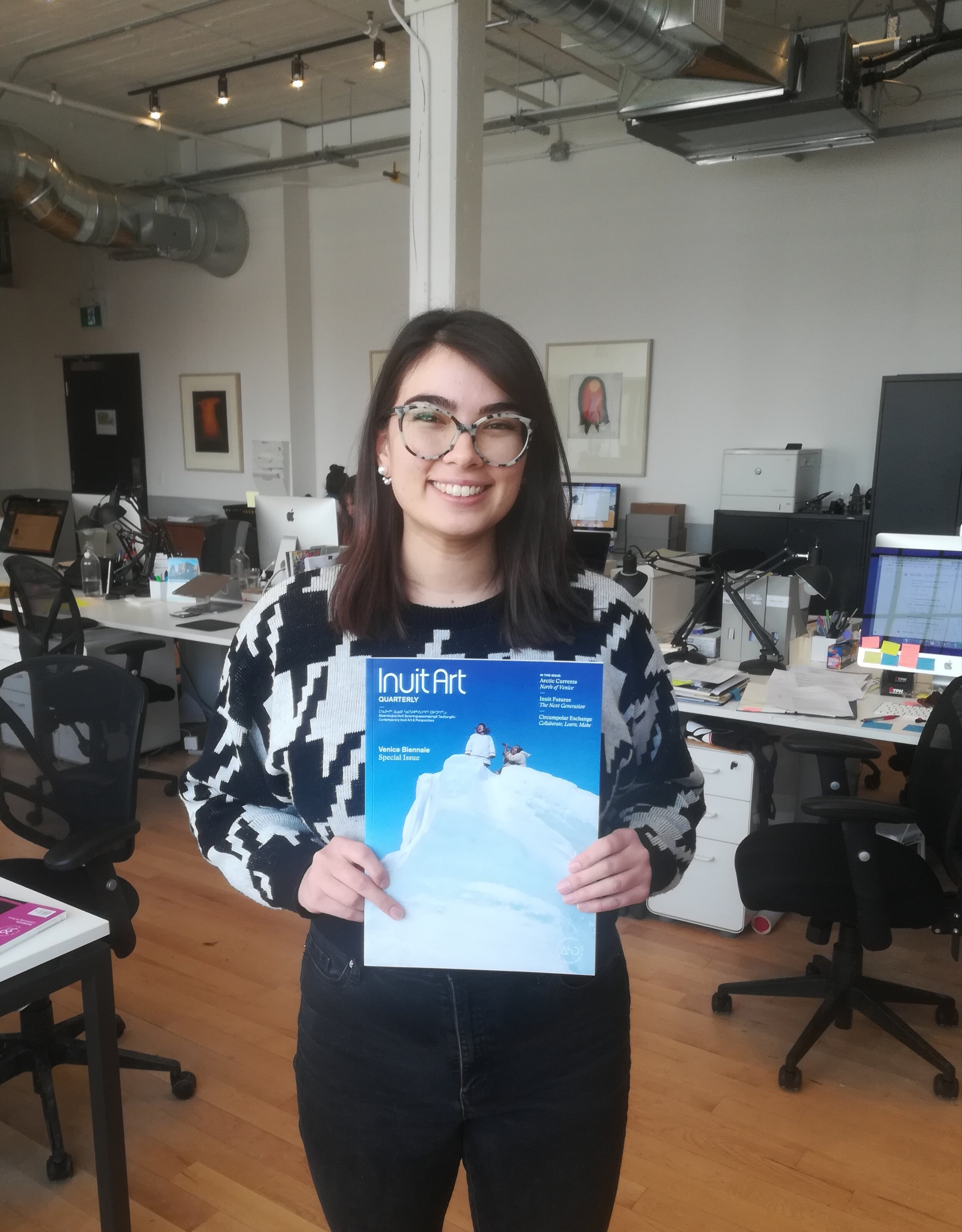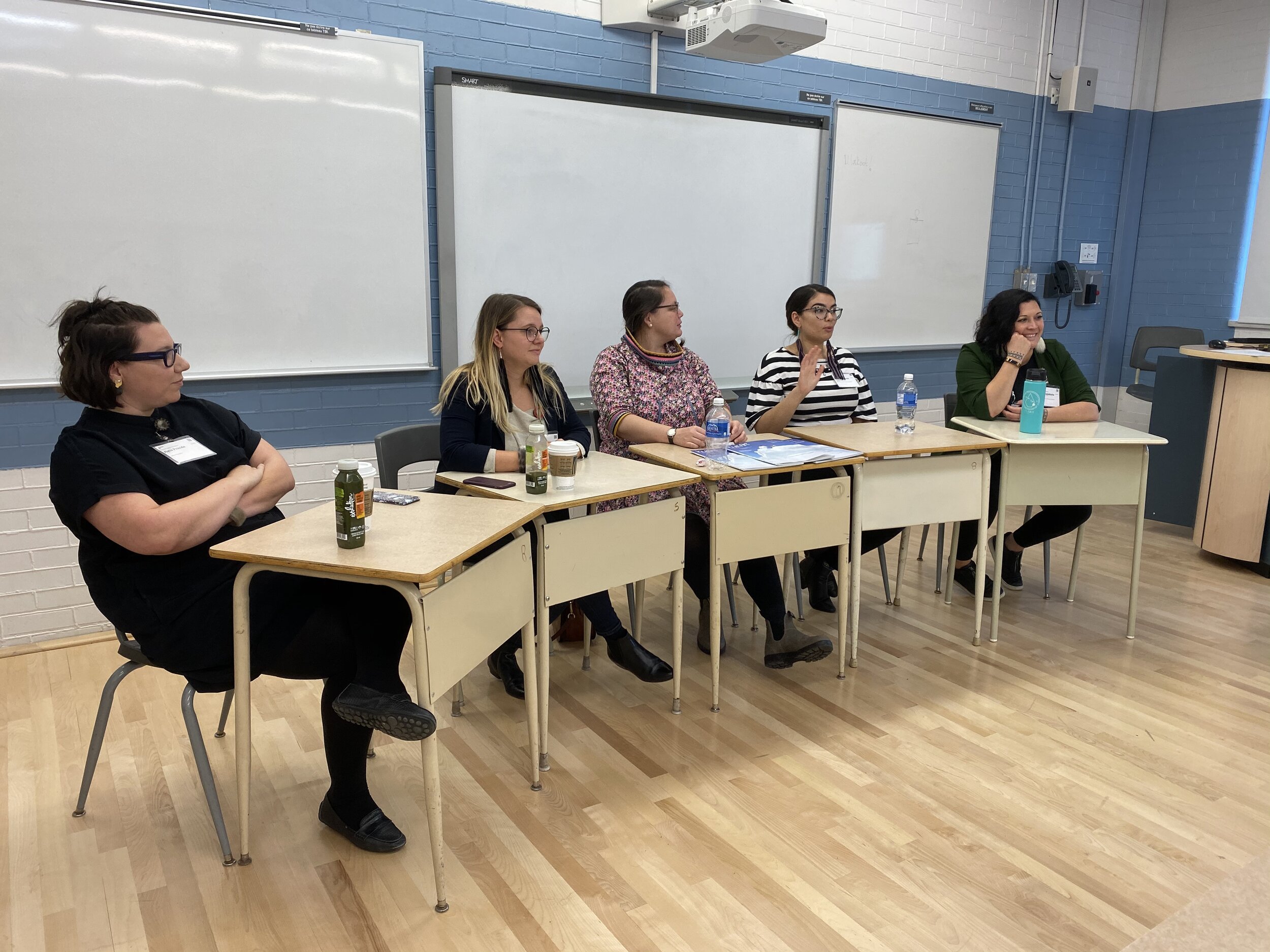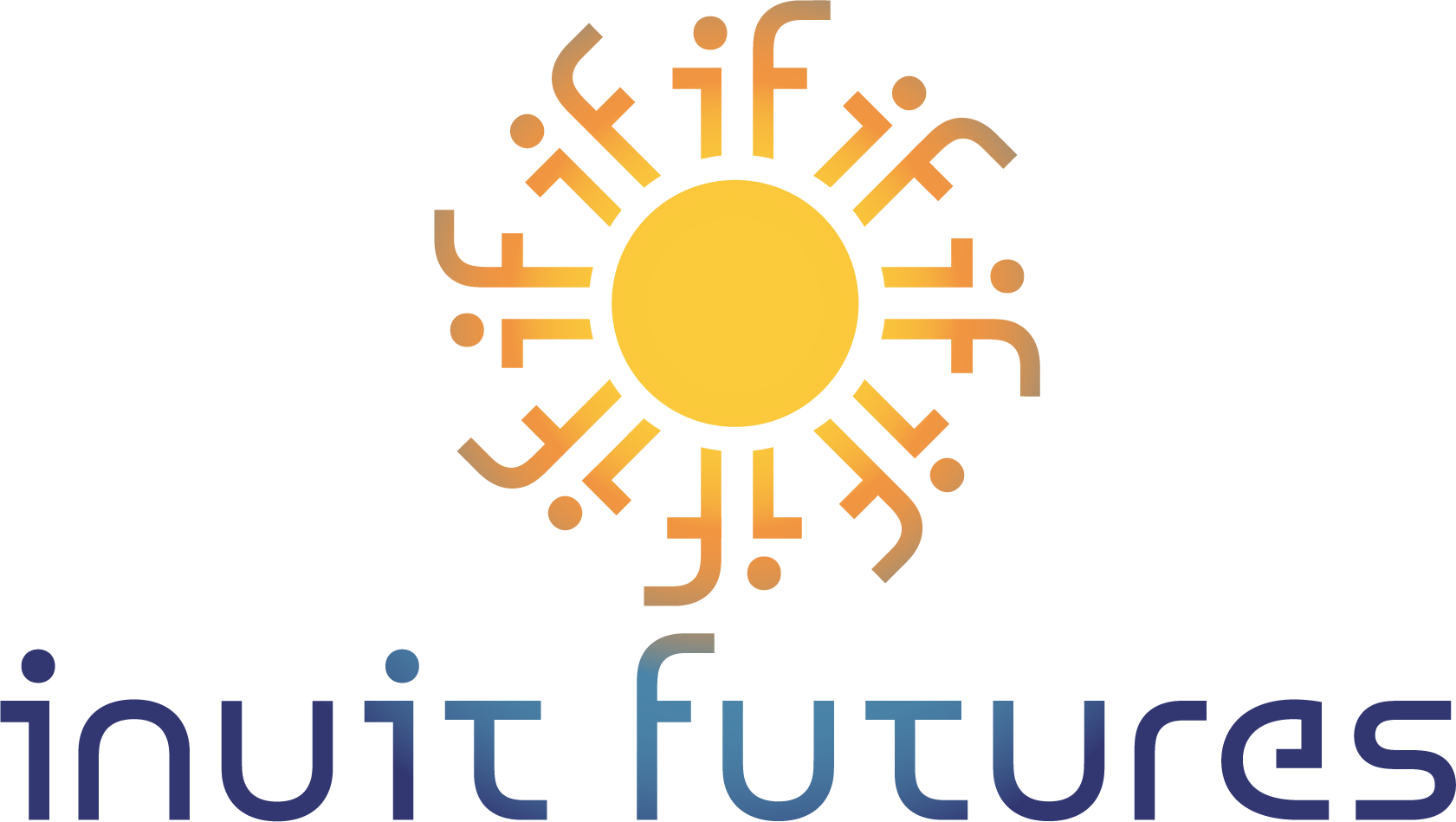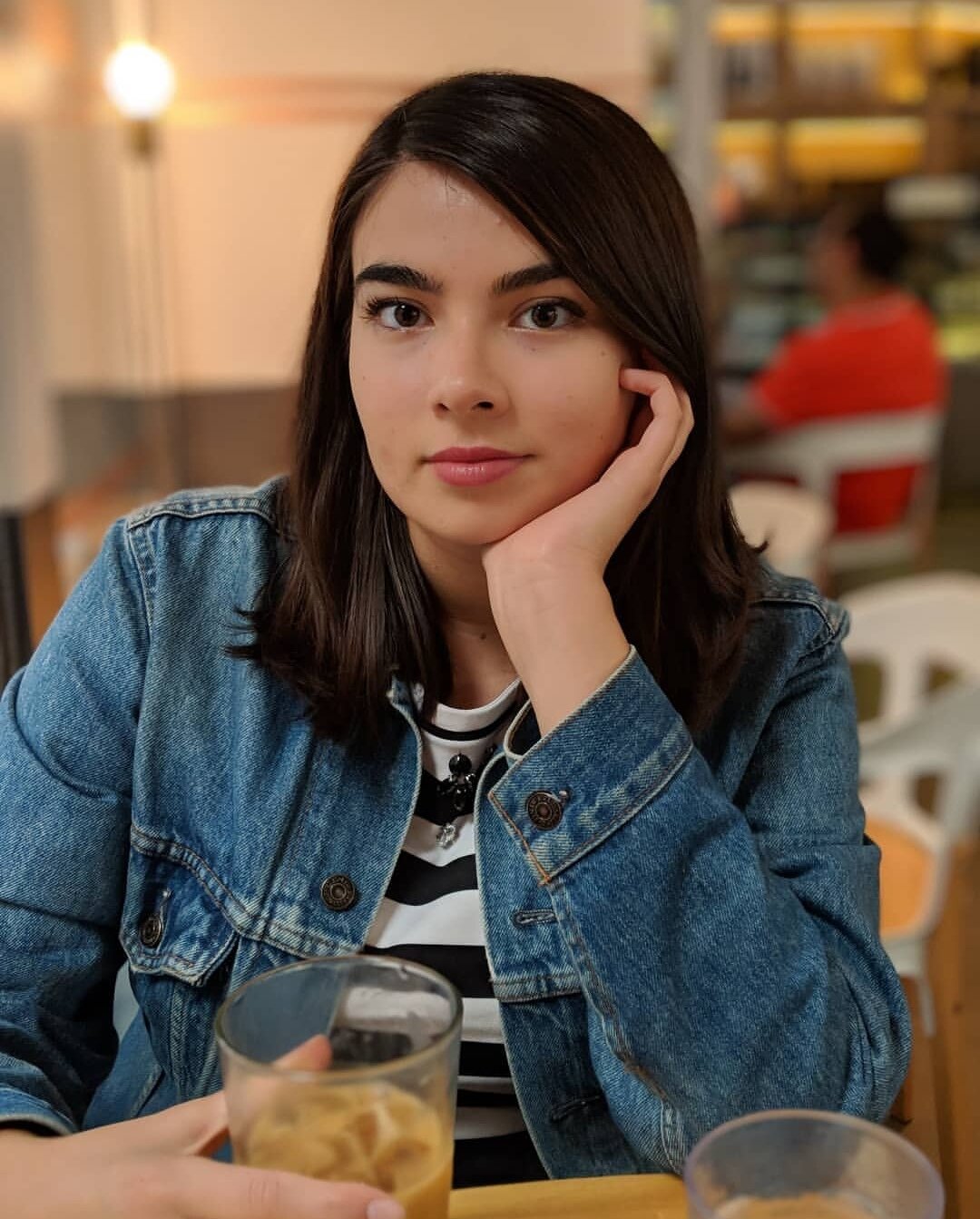Photo courtesy of Emily Henderson
Inuit Futures ilinniaqtuit
Emily Henderson
Raised in the Okanagan Valley in British Columbia, Emily Henderson is a recent graduate of the University of British Columbia with a BA in Anthropology. Although her family hails from Greenland and her father is a practicing Inuit artist, she has lived her entire life in Canada. Originally intending to pursue classical music, Emily developed a love of museums and museum anthropology during her undergraduate degree and instead began mapping out a career in cultural work.
Since January 2019, Emily has been an employee of the Inuit Art Foundation as a Contributing Editor to Inuit Art Quarterly (IAQ), made possible through the Inuit Futures in Arts Leadership: The Pilimmaksarniq / Pijariuqsarniq Project. Working remotely from her home in Vancouver while she completed her undergraduate degree provided Emily with first-hand experience in the production of the magazine, as well as opportunities for travel and professional development.
“Being able to work throughout the last year of my degree in a field I’m really passionate about has equipped me with invaluable experience,” Emily says of her employment and mentorship she has received at the Inuit Art Foundation. “I’m going to be coming out of my post-secondary education not only with practical knowledge but with the foundations of a skillset that I will use throughout the rest of my career.” Indeed, after graduating from UBC, Emily began working full-time for IAQ as the magazine’s Profiles Editor as of January 2020.
The most significant project Emily helped develop as an Inuit Futures ilinniaqtuk was the compilation and publication of a special issue of the IAQ magazine based on written works and art pieces developed by her cohort at the 58th Venice Biennale in 2019. The Venice Biennale Special Issue, which was eventually printed in a limited run, was the first all-Inuit produced issue of the IAQ in a publishing history spanning more than three decades.
“I can remember getting the call that I would be going to Italy to see Isuma open their installation at the Canada Pavilion, it was absolutely unreal. It was even more amazing to hear that myself, along with my colleague Napatsi Folger, would be leading the production of a magazine that would be coming out of this trip. This is a historic volume from a legacy publication and not something I would have ever expected to be involved in before I even graduated.”
For Emily, the most important part of her participation with Inuit Futures is not only the professional and academic connections, but the personal relationships she has developed as a result. “The support so far has just been incredible,” she says. “Not only do I have a strong network of mentors I can turn to for help and advice through my own career, but also really strong bonds with a lot of my peers in my program that I’m so excited to grow alongside into the future.”



